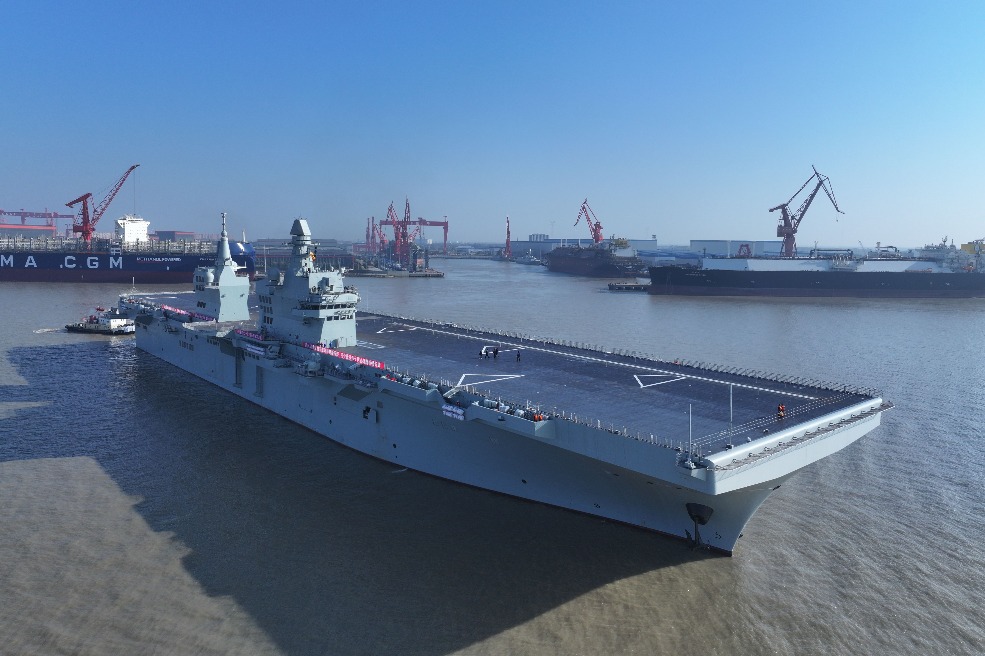Fast forward

|


|
The institute studied the existing high-speed railway networks in Japan, France and Germany and came to the conclusion that though all the three models were suitable for import, they would not be of use in China without modifications. Among the three, Japan's high-speed rail technologies needed smaller modifications, while French technologies would have needed major makeovers. As for construction costs, Japanese and French technologies were less expensive than Germany.
The team also gave suggestions on the rail line's operation mode and speed, apart from other conclusions.
With most of the gray areas ironed out, the State Council approved the mid- and long-term railway network planning on Jan 7, 2004.
The planning aimed to extend the country's railway length to 100,000 km, including 12,000 km of railways with speeds of more than 200 km/h exclusive for passenger transport. It is this document that formally ushered China into the high-speed rail era.
Large-scale construction of high-speed railways has continued across the country since then, including the 1,068.8-km Wuhan-Guangzhou high-speed rail, which started construction on June 23, 2005, and the 120-km rail link between Beijing and Tianjin, which started construction in July 2005.
In 2006, the State Council approved the Beijing-Shanghai high-speed rail, 12 years after the government decided to go ahead with the plan. After two more years of preparation, the 1,318-km Beijing-Shanghai high-speed rail began construction on April 19, 2008.
From 2008, the high-speed railway construction began to reap dividends. On Aug 1, 2008, China's first 350-km/h high-speed railway line between Beijing and Tianjin was opened to traffic just before the 2008 Beijing Olympics.
The success of the Beijing-Tianjin high-speed rail link prompted the State Council to rework the mid- and long-term railway network plan by expanding the railway length and refining the network structure. The revised plan aimed to increase the total railway length to 120,000 km by 2020, including 16,000 km of high-speed railway lines on which trains would run at speeds of over 200 km per hour.
Between 2008 and 2010, a number of high-speed railway lines were opened to traffic, including the Shijiazhuang-Taiyuan link in April 2008, the Wuhan-Guangzhou high-speed rail in December 2009, and the Shanghai-Nanjing and Shanghai-Hangzhou lines in 2010.
By the end of 2010, the high-speed network stretched to 8,358 km, the world's longest, and also accounted for one third of the world's total, which is some 25,000 km in 17 countries and regions, including Japan, France, Germany and Italy, the Ministry of Railways said in December 2010.
But in February, the railway ministry underwent a series of changes with several top officials losing their jobs for "severe violation of discipline".
The current railway minister Sheng Guangzu has emphasized that the focus of future expansion would be on safety. Under his stewardship, the ministry has decided to operate only two lines (the Beijing-Tianjin and Shanghai-Hangzhou rail links) at 350 km per hour, and lowered the speed of most other lines to 300 km per hour from July 1, including the newly started Beijing-Shanghai high-speed rail.
Today's Top News
- China expresses worry over Japan's military and security moves
- Shenzhou XX mission crew returns after debris delays landing
- China warns Japan of 'heavy price' for any military interference in Taiwan
- Japan will only suffer a crushing defeat should it dare to take a risk: Defense spokesperson
- Tokyo must stop playing with fire: Editorial flash
- China's Shenzhou XX crew en route back to Earth






























